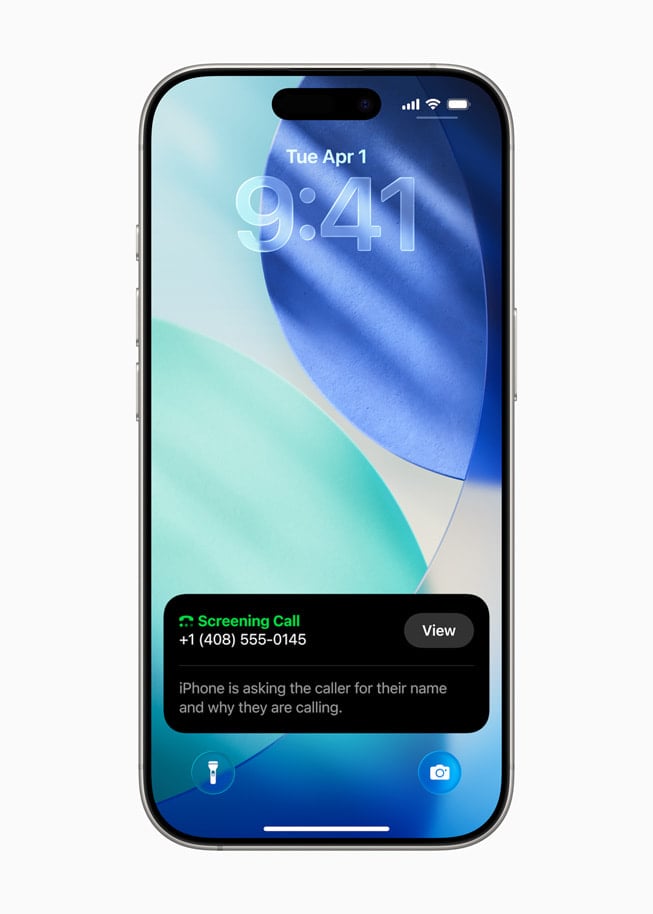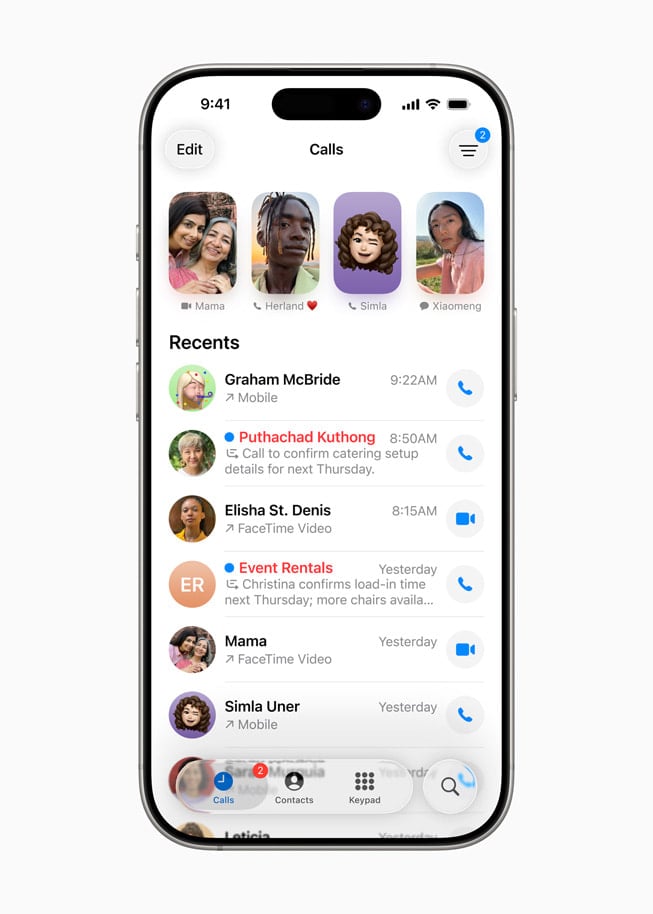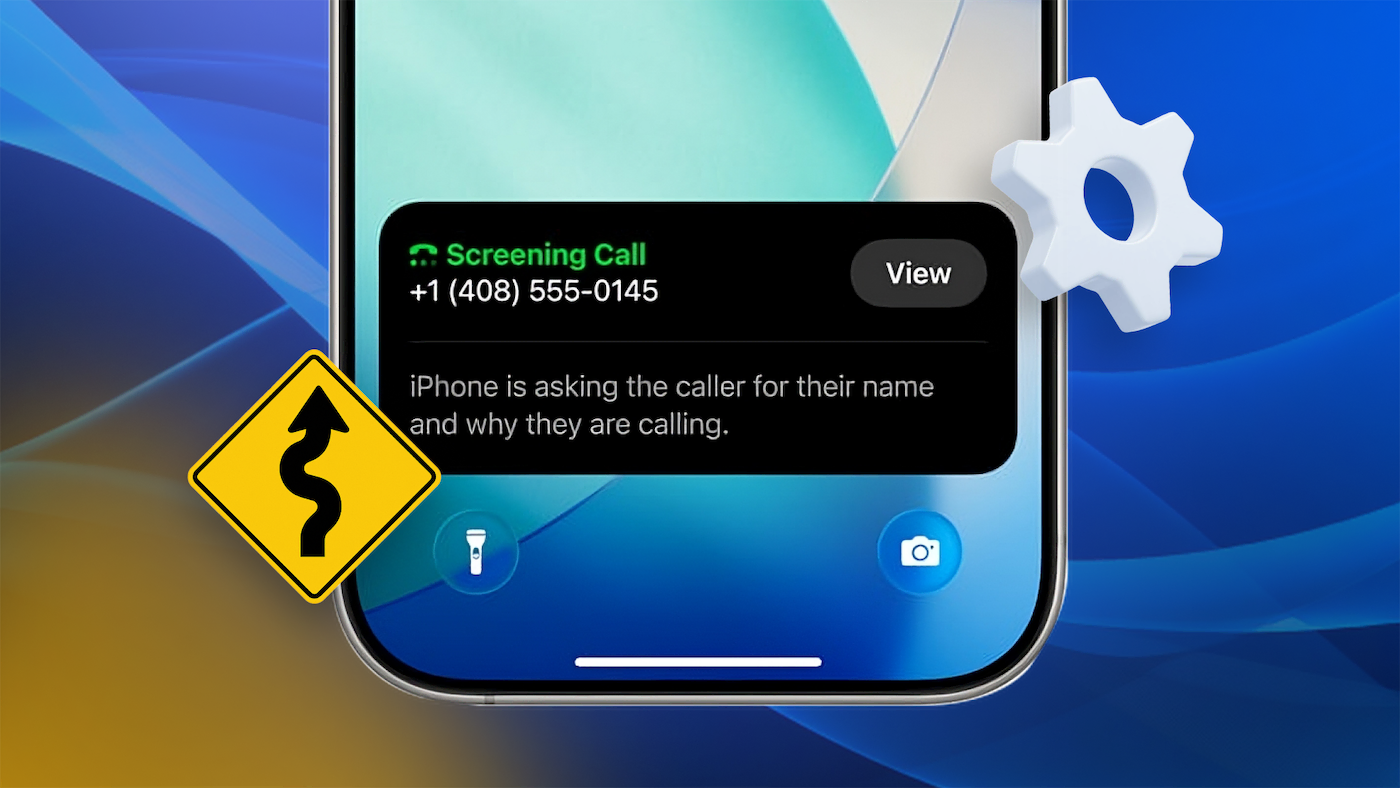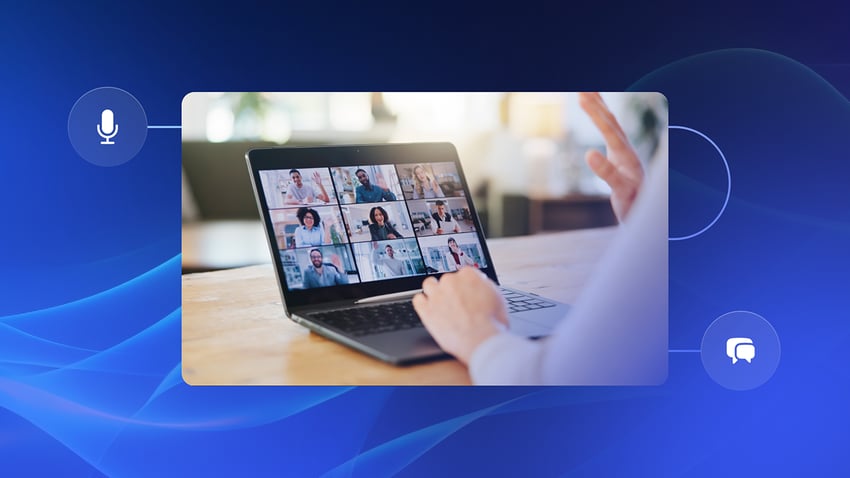Outbound dialing remains one of the most reliable ways to connect with customers, prospects, or past-due accounts. But as carriers, devices, and apps layer on filters to guard against spam, the game has shifted.
The good news? Businesses that call with authenticity, protect their number reputation, and lead with clarity stand out, so their calls are picked up while others are ignored.
If you lead a sales or collections team or run a growing business, this guide will show you how to maintain high answer rates and uphold a strong customer experience.
These industry changes affect everyone who manages outbound calling campaigns, so these tips apply even if you’re dialing from a larger enterprise.
First, let’s cover what’s new for businesses reaching iPhone users, which account for approximately 49% of the mobile user market in the United States.
Here’s a helpful video from Jessica breaking it all down for you:

New Call Screening Features With iOS 26
With iOS 26, Apple introduced a built-in call screening feature that can change how calls appear to iPhone users. This builds upon the existing call screening and live voicemail transcription functionalities, making them more accessible to more people. From their site:
Manage unwanted calls. Call Screening automatically answers unknown callers without interrupting you. Once the caller shares their name and the reason for their call, your phone rings and you can decide if you want to pick up.
When activated, incoming calls are answered briefly, prompting unknown callers to identify themselves and state a reason for the call. A live transcript then appears, allowing the person to decide whether to pick up the notification as a priority.
Here’s a preview of how your business call will show up if you’re not a saved contact:


On the calling side, you’re prompted to state your name and why you’re calling. You’ll hear hold music and a familiar Siri-like voice that gives the recipient the choice to send a quick reply, which is spoken back to the caller.
The most immediate change is the importance of stating why you’re calling. It now appears as text, not just audio. You should clearly articulate your name and company and front-load the purpose of the phone call. It must be concise, clear, and compelling enough to encourage the recipient to answer.
Calls from added contacts and previously dialed numbers still connect as they did before. Voicemails still reach their intended recipients even if the call is missed or rejected. Parallel dialing still works as intended, but the call will ring for about 30 seconds before reaching their voicemail.
What Call Screening Means for You
Call screening reduces the uncertainty and risk of answering unknown callers. If someone is expecting a call from a doctor, a pharmacy, a school, or a business, for example, they would more likely be able to answer.
While call screening adds friction to reaching people, it’s not an all-out block unless users opt to silence unknown callers. In that specific case, calls will still leave entries on the missed call history.
This follows industry trends where there’s decreasing trust in phone numbers themselves. We’ve all seen the spoofed “neighboring number” trick that scammers use. This change puts more power in consumers’ hands for managing unwanted calls.
Maintaining a consistent and trustworthy caller ID and using a trusted communications provider like Nextiva adds legitimacy to your outbound calls. Behavior plays a role as well. Ensuring that you have a proper reason for calling someone and sharing a succinct message helps to increase answer rates.
Fact: Nextiva is a top voice service provider that authenticates calls originating from its network on behalf of over one million users using STIR/SHAKEN. Nextiva is also certified with the FCC as part of its robocall mitigation database.
Opening Call Scripts That Get People To Pick Up
Your opener is a mini headline. Whether someone hears it live or reads it on a screen, it has to communicate quickly who you are, why you are calling, and why it matters.
Here are two examples to contrast.
- Good opener: “Hi Jessica, this is Chris from ABC Services. I’m calling with a quick update on your account.”
- Weak opener: “Hey, this is Chris. I just wanted to reach out really quick to talk to you about some of the solutions we have.”
The first is clear, concise, and respectful. The second is vague, long, and impersonal. That distinction makes all the difference.
For more ways to refine your approach, explore this outbound calling strategy.
Comparing Weak vs. Strong Call Openers
| Opener Type | Outbound Call Script Example | Explanation |
|---|---|---|
| Weak: Vague intro | “Hi, I just wanted to see if now’s a good time to chat about your business needs.” | Generic, no identity, reads like spam. |
| Strong: Clear identity | “Hi Sarah, this is Jordan with Apex. I’m calling about the order you placed last week.” | Immediate clarity, personal context, easy to trust. |
| Weak: Overly long | “Hello, this is Chris. I work with businesses in your area and I’d like to explain how we could help you save money.” | Rambling and scripted. |
| Strong: Specific hook | “Hello Mark, Chris at Harbor here. Quick update on the ticket you submitted yesterday.” | Concise, relevant, respectful of time. |
Outbound Calling Best Practices
- Lead with your identity: Your opening line should include your name, company, and purpose. That clarity builds instant trust and gets people to pick up.
- Keep your opener short and concrete: Stick to about 15 words. This feels respectful and professional, while long intros feel anxious and boilerplate.
- Segment outgoing phone numbers: Segment your outbound numbers by purpose and ensure you stop using any flagged numbers. With clean numbers, your campaign stays strong.
- Dial with care: Avoid repeated calls within short windows. If someone does not answer, try a different channel, like email or text message, before redialing them. Maintain proper call list hygiene before dialing.
- Personalize with relevant context: Reference something tangible, like a ticket, order, or location. That personal touch stands out in a sea of generic calls.
- Opt for multi-channel: If a call is screened or goes unanswered, send a brief text. This keeps the conversation warm and gives people a way to respond. Also, it’s prudent to gain explicit permission from existing customers to use SMS and voice as desired.
- Ask new customers to save your phone number: Encourage customers to add your phone number to their contacts so your next call isn’t an unknown caller. You can also send them a vCard (.vcf) file with your contact details for added convenience.
- Ensure proper call routing: Make sure you have the appropriate call flows in place so that when a recipient calls back, the call is routed to the correct team that originated the call.
- Coach on those first few seconds: Listen to or role-play only the opener lines in meetings. Refine and reward those who connect because consistency in that moment drives results.
Get up to speed on outbound dialers in less than four minutes. You’ll learn how they work and the benefits of using them.

Building Trust Through Number Hygiene
Businesses also need to ensure the reputation of their phone numbers is good. Even one flagged number can undermine an entire campaign.
Register your numbers with the Free Caller Registry, specifying the nature of your outbound calls, and confirm that your Caller Name (CNAM) info is accurate (Nextiva Support article).
If your line shows as “Unknown,” expect fewer live answers. Rotate numbers intelligently to maintain volume without triggering screening. Finally, watch for negative labels. Removing flagged numbers quickly preserves your reputation.
To help with this, keep a close eye on your voice analytics to identify issues early and maintain optimal performance.
Already a Nextiva customer? If you have any concerns with your business phone numbers, just reach out to our support team, and we’ll be happy to help.
Master Outbound Calls With Phone Screening
Call screening rewards professionalism. Teams that build trust with respectful outbound dialing practices and clear messaging continue to connect and get through where others do not.
Train for outbound excellence
Scripts alone do not overcome call screening — people do. That is why your training needs to elevate proven calling behaviors.
Create a call library of successful openers and play them back in team sessions. Use role-play for scenarios like live pickup, screening transcripts, and voicemails. Make clarity the objective. Every rep should state their name, company, and purpose in under five seconds.
For more ideas, explore Nextiva’s proven call center training tips.
This is a good reminder to share what you already get with Nextiva:
- Reputable business voice service provider certified by the FCC
- Calls that are authenticated with STIR/SHAKEN for added security
- 10DLC text messaging compliance so users and teams can text
- Proven expertise in powering communications for companies of all sizes and industries
Improve Your Outbound Calling Strategy
A strong outbound calling strategy isn’t about dialing as fast as you can. It’s about being smart, focused, and helpful from the first touch.
You need the right mix of tools, people, and tactics. That means using predictive dialers to save time, empowering your salespeople with effective scripts, and always leading with a clear value proposition.
Your calling process should evolve as customer expectations do. Carriers are watching. Consumers are cautious. You have to earn attention. and that starts with clean call lists and tight KPIs like contact rate and call volume.
Sales process, strategy, and people
Let’s talk people. Even the best dialing software won’t matter if your sales reps aren’t set up to succeed.
Your sales process should prioritize building meaningful connections, not just quick conversions. Build relationships. Show up with context. And make sure your outbound sales strategy is easy to follow and repeat across the team.
Sales teams that understand their prospects’ pain points and can speak to them early. Create trust quickly. That’s how you turn cold calls into qualified leads.
Emphasize an enticing value proposition
Nobody likes a pitch that sounds bland.
But a great sales pitch? It doesn’t feel scripted at all. It sounds relevant, clear, and highly personal.
That’s where your value proposition comes in. Reps need to communicate what makes your solution valuable within seconds, especially on cold calls. Whether it’s pricing, automation, or improving customer satisfaction, the message needs to land fast.
It also helps to overcome implicit objections in advance. Active listening makes a huge difference in showing you’re not just reciting lines, but actually engaging.
Using call center tools that scale with you
Powering every great sales team is great technology.
Nextiva’s contact center software helps your team move faster and more efficiently. Predictive dialers? Built in. CRM integration? Absolutely. Appointment setting? Easy.
It also handles follow-up calls, routes inbound calls, and gives your team visibility into the metrics that matter, like conversion rates and key performance indicators.
If you’re managing an outbound call center, this isn’t just helpful. It’s essential.
Multi-channel messaging and social media outreach
Cold calls are still effective, but they work even better when paired with a multi-channel strategy.
Sales reps today are connecting through messaging, LinkedIn, SMS, and even social media. Some leads engage with a quick DM long before they answer a phone call.
So meet people where they are. Reference earlier messages in your follow-up calls. Send personalized content. Host webinars that address real customer pain points.
Every touchpoint should feel like part of a larger conversation, not a one-off interruption.
Monitoring outbound metrics that matter
“If you can’t measure it, you can’t improve it,” they say.
Track your contact rate, call volume, conversion rates, and follow-up success. These metrics tell you what’s working, what’s not, and where to pivot.
Real-time dashboards give decision-makers the insights they need to make quick changes. Adjust your call lists. Refine your scripts and reallocate reps.
These are the KPIs that drive revenue and help you coach your team to drive optimal outbound call center performance.
FAQs About Outbound Calling
An outbound calling strategy in 2025 succeeds when it blends targeting precision with personalization and customer experience alignment. The strongest programs do more than push calls through a dialer. They identify pain points, frame a clear value proposition, and create a consistent process that sales teams can repeat with confidence.
Smart pacing matters. Call too quickly and prospects feel harassed; wait too long and momentum disappears. Timing, feedback loops, and strong documentation ensure every rep follows a plan that adapts as conditions change. Agile execution makes the difference between a stale script and a living strategy.
When built correctly, outbound calling shifts from interruption to opportunity. Each call becomes a chance to deliver relevance, spark trust, and establish a lasting relationship.
Rigid scripts are fading. Customers hear them instantly, and they tune out just as quickly. The modern approach is to give reps a framework instead of a word-for-word script. A strong opener, a reason for calling, and a few prepared responses create structure without smothering authenticity.
Personalization is the secret weapon. Mentioning a recent order, an inquiry, or even a shared connection signals that the call is more than a cold interruption. Busy decision-makers pay attention when the caller respects their context and time.
Role-play sessions bring this to life. Teams practice balancing structure with improvisation until the conversation feels natural. The result is a call that sounds confident, relevant, and human.
Performance improves when technology takes the grunt work out of calling. Predictive dialers help agents connect faster while keeping compliance intact. Customer relationship management systems capture every touchpoint, so no interaction slips through the cracks.
Automation frees salespeople from repetitive tasks like logging calls or sending reminders. Real-time analytics then step in to show what is working, what is failing, and where to pivot. Without this visibility, outbound calling becomes guesswork.
Platforms such as Nextiva’s call center software pull these capabilities into one system. Dialer logic, voicemail drops, appointment setting, and reporting operate together, giving teams the speed and data they need to scale with precision.
Contact rate, call volume, and conversion rate remain the backbone of outbound performance. They tell you if calls are reaching people, how often conversations occur, and whether those conversations lead to results.
Beyond the basics, advanced teams monitor follow-up success, call quality, and even the effectiveness of scripts. These insights reveal the moments when a campaign resonates and the points where it falls flat.
Dashboards make all of this actionable. By viewing key performance indicators in real time, leaders can shift resources, adjust scripts, or coach reps before a slight dip in results turns into a larger trend.
Effective outreach is built on patient persistence with purpose. One call rarely works. Following up at the right time, with the right message, signals that you understand a prospect’s priorities, rather than just chasing numbers.
Qualifying leads early sharpens this approach. When CRM data is fresh, every outreach attempt feels personal rather than generic. Reps who reference specific needs or past interactions demonstrate credibility and earn attention.
Inbound calls can guide the process, too. Each conversation reveals details that refine outbound strategy, turning raw data into tailored outreach that gets stronger over time.
Phone calls remain powerful, but relying on them alone is a mistake. Today’s buyers move across channels, so outreach must follow. SMS, email, LinkedIn, and even direct social messages extend the conversation beyond a single ring.
Webinars provide another layer. They position your brand as a trusted advisor by delivering knowledge before asking for business. Prospects who attend leave with a sense of value, which makes them more receptive to follow-up calls.
The winning strategy is multi-channel. When phone, digital, and event-based outreach work together, prospects see consistency and intent. That recognition builds trust and accelerates the path to conversion.
Optimizing Outbound Sales Calls with Nextiva
At the end of the day, outbound calling is about making real connections.
When your sales strategy is aligned, your tools are dialed in, and your team feels confident, outbound becomes a revenue engine and not a guessing game.
Use this guide to revisit your sales process. Whether you’re trying to reach decision-makers or re-engage qualified leads, minor improvements can make a big difference.
And if you’re looking for a platform that helps you streamline everything from automation and CRM to coaching and performance tracking. Nextiva is here to help.
This is where Nextiva Contact Center shines. It helps your team adapt to call screening with tools that protect your number reputation, optimize call pacing, and keep your caller ID trustworthy.
Book a demo to see how it can help you scale outbound and inbound effortlessly.

















 VoIP
VoIP 









